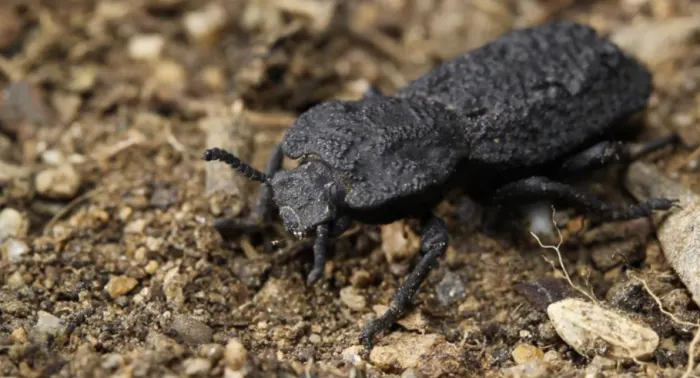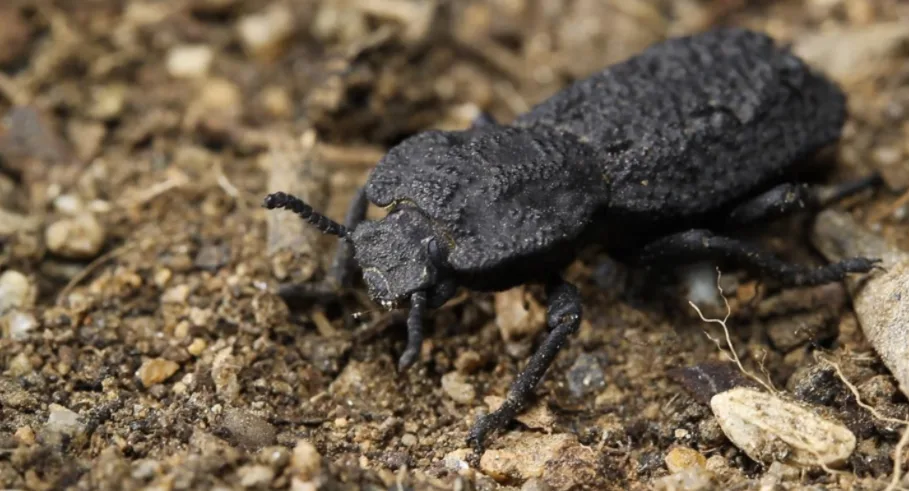
Check out the beetle that can survive being run over by a car
Researchers say the beetle is built like a little tank.
The diabolical ironclad beetle is an insect that lives up to its name. With one of the strongest and most crush-resistant exoskeletons in the known animal kingdom, it can survive being run over by a car.
In a new paper in Nature, researchers at the University of California, Irvine (UCI), in partnership with other institutions, set out to better understand the beetle's strong exoskeleton in hopes that the findings could be used to improve existing technologies.
The ironclad beetle's strength gives it an advantage in the wild because its thick shell helps to fend off the birds, reptiles, and rodents that try to make a meal out of it. When that doesn't work, it has another trick: It is convincingly good at playing dead.

Native to desert habitats in Southern California, the diabolical ironclad beetle has an exoskeleton that's one of the toughest, most crush-resistant structures known to exist in the animal kingdom. UCI researchers led a project to study the components and architectures responsible for making the creature so indestructible. Caption courtesy: UCI. Photo credit: David Kisailus / UCI
In a statement, principle investigator David Kisailus said it is "built ... like a little tank" because it's neither lightweight nor is it fast.
"That's its adaptation: It can't fly away, so it just stays put and lets its specially designed armor take the abuse until the predator gives up."
Jesus Rivera, a graduate student in Kisailus' lab, began studying the beetles in 2015. Compression tests conducted by Rivera in the lab determined it can withstand a force about 39,000 times its body weight.
For a 200-lb person to equal this, they would have to tolerate a weight of 7.8 million pounds.
An analysis of the chemical composition of the beetle's exoskeleton revealed it contains a much higher concentration of protein than lighter beetles. Researchers also found the beetle's elytra -- forewing blades that open and close to guard against bacteria and other sources of harm -- perform differently under compression than the elytra of other beetles.
Under a microscope, Rivera and Kisailus found the joining structures of the elytra look "very much like interlocking pieces of a jigsaw puzzle," the authors say in a statement.
"When you break a puzzle piece, you expect it to separate at the neck, the thinnest part," Kisailus continues.
"But we don't see that sort of catastrophic split with this species of beetle. Instead, it delaminates, providing for a more graceful failure of the structure."
The outside surfaces of the blades also possess rodlike-elements called microtrichia, which may create friction and provide resistance to slips.
Rivera and Kisalius believe the findings could greatly benefit humanity, particularly in aeronautical engineering, where the data could one day be used to create stronger airplanes.
"This study really bridges the fields of biology, physics, mechanics, and materials science toward engineering applications, which you don't typically see in research," Kisailus said.
"Luckily, this program, which is sponsored by the Air Force, really enables us to form these multidisciplinary teams that helped connect the dots to lead to this significant discovery."











